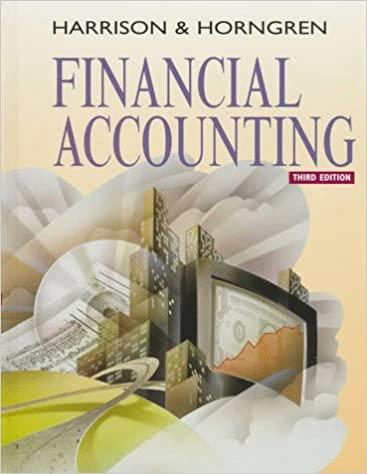Can Someone please help

In the spring of 2007 , John Radford retired as the tennis pro of the Forest City Tennis Club, an exclusive indoor/outdoor club in London, Ontario. A special committee of the board of directors was formed to find a replacement for the combined job of tennis pro and owner of the pro shop and bar lounge. Nine persons had applied for the position, but the board's first choice was Mike "The Racquet" Blair. His qualifications and experience were excellent, and the committee believed his reputation as the two-time Canadian amateur tennis champion would enhance the status and prestige of the club. After learning of the job offer, Blair accepted immediately. He was excited about the opportunity to invest his hard-earned savings into a business he knew and loved. On July 1, 2007, Blair incorporated the pro shop and bar lounge area and deposited $100,000 into the corporation's bank account in exchange for common shares. Also on that day, Blair purchased an inventory of racquets, balls, clothes, shoes and accessories (i.e. the pro shop inventory) valued at $16,340, liquor inventory valued at $13,660,$11,000 worth of fixtures and $4,000 for glassware. The business was to receive all sales from the pro shop and bar lounge and would pay part-time help to sell goods and serve drinks. Blair was an immediate success. He was readily accepted by all the members and was regarded as an asset to the club. Much of his time was spent instructing individuals while the better players anxiously awaited an opportunity to strike up a match with Blair. Given his busy schedule, Blair did not keep a close watch on his accounting records. He did, however, attempt to keep an accurate cash record and decided not to worry about the rest until fiscal year-end. On June 30,2008 , Blair began to examine his records and notes. His cash records revealed the following: \begin{tabular}{|l|r|} \hline \multicolumn{2}{|c|}{ Receipts } \\ \hline Pro shop sales & $53,700 \\ \hline Match fees & 22,650 \\ \hline Instruction (lesson) fees & 45,600 \\ \hline Liquor sales & 64,550 \\ \hline Other revenue & 3,050 \\ \hline Total & $189,550 \\ \hline \end{tabular} \begin{tabular}{|l|r|} \hline \multicolumn{2}{|c|}{ Payments } \\ \hline Rent of pro shop and lounge 1 & $19,500 \\ \hline New lounge fixtures (purchased June 1,2008) & 8,400 \\ \hline Pro shop inventory 2 & 26,650 \\ \hline Liquor inventory 3 & 14,400 \\ \hline Salaries and wages & 103,500 \\ \hline Total & $172,450 \\ \hline \end{tabular} Blair was sure his bank account was correct, but he did not know what else he should record. He went to Gary Davis, a local chartered accountant and club member, to ask for help. Davis began by examining the chequebook, invoices and other records Blair had accumulated in a shoe box. He found two outstanding bills: one for additional lounge fixtures of $4,200 (purchased on June 1 , 2008 ) and a $2,000 invoice for the purchase of pro shop inventory (purchased on June 18,2008 ), due in 30 days. On June 30,2008, Blair had 11 racquets in the shop, waiting to be restrung. Although he had done no work on the racquets and had not collected any money from customers, his normal rate for restringing was $175 per racquet, including materials. The members purchased liquor "chit books" or vouchers in the pro shop for use in the bar lounge. Although chit book cash receipts of $64,550 were noted, $650 of the chits had not been used as of June 30 . These amounts could be carried over to the following year. The fixtures purchased on July 1,2007, had an estimated useful life of five years, whereas, the new fixtures would last an estimated eight years. Due to frequent breakage, glassware had a much shorter useful life of two years. These assets would be depreciated using the straight-line method with no residual value. During the year, Blair instructed 606 sets of lessons for $100 per set. He had also played 155 matches with members, charging \$150 per match. Blair had not yet received payment for four of those matches. Davis felt that the social pressures among the club's memberships would ensure full payment for all debts owed. The members purchased liquor "chit books" or vouchers in the pro shop for use in the bar lounge. Although chit book cash receipts of $64,550 were noted, $650 of the chits had not been used as of June 30 . These amounts could be carried over to the following year. The fixtures purchased on July 1, 2007, had an estimated useful life of five years, whereas, the new fixtures would last an estimated eight years. Due to frequent breakage, glassware had a much shorter useful life of two years. These assets would be depreciated using the straight-line method with no residual value. During the year, Blair instructed 606 sets of lessons for $100 per set. He had also played 155 matches with members, charging $150 per match. Blair had not yet received payment for four of those matches. Davis felt that the social pressures among the club's memberships would ensure full payment for all debts owed. On June 30,2008 , Davis helped Blair take a physical inventory count and found that there was $17,880 worth of pro shop inventory and $11,920 worth of liquor inventory. Blair was required to pay rent to the club in the amount of $1,500 per month for use of the space. 2 Does not include payment made on July 1, 2007, for initial pro shop inventory. 3 Does not include payment made on July 1, 2007, for initial liquor inventory. Income taxes were calculated at a rate of 30 per cent of net income before tax. REQUIRED 1. Record all transactions, adjusting and closing entries in T-account form for the year ending June 30 , 2008. 2. Prepare an income statement and a statement of financial position for the same time period












